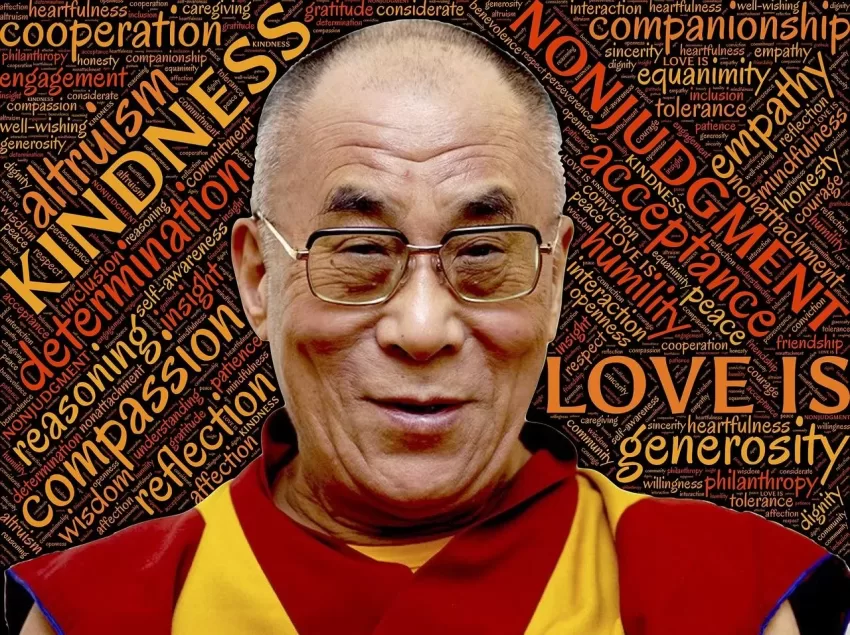How the Dalai Lama Chosen: The Dalai Lama has apologized after a video emerged showing the spiritual leader kissing a child on the lips and then asking the boy to “suck my tongue” at an event in northern India. In a statement on Monday, the Dalai Lama’s office said it “would like to apologize to the boy and his family, as well as many of his friends around the world, for any harm caused to the child.” your words caused,” adding that he “regrets” about the incident. “His Holiness often teases people he meets in an innocent and playful way, even in public and in front of cameras,” the statement read.
His apology came after a video of the exchange, which took place at an event in the hillside town of Dharamshala in February, went viral on social media with many users criticizing the action. of His Holiness the Dalai Lama. In the video, the boy can be seen approaching the Nobel Peace Prize winner before asking, “Can I give you a hug?” The 87-year-old spiritual leader then invited the boy to the stage and pointed to the boy’s cheek and said “here first”, prompting the boy to hug and kiss him.
How The Dalai Lama Chosen
The Dalai Lama is a spiritual leader of Tibetan Buddhism and is considered to be the reincarnation of the previous Dalai Lama. The selection process for the Dalai Lama is a complex and centuries-old tradition, involving a combination of spiritual, political, and cultural considerations. In this article, we will discuss the process of how the Dalai Lama is chosen, including the key steps and criteria involved.
The Process of Choosing a Dalai Lama
- Identifying the Reincarnation of the Previous Dalai Lama
How The Dalai Lama Chosen: The first step in selecting a new Dalai Lama is to identify the reincarnation of the previous Dalai Lama. According to Tibetan Buddhist tradition, the current Dalai Lama is believed to be the reincarnation of the previous Dalai Lama, who in turn was the reincarnation of the one before him. The search for the reincarnation typically begins after the death of the previous Dalai Lama.
- Search for the Reincarnation Candidate
After the death of the previous Dalai Lama, a team of high-ranking Tibetan Buddhist monks, known as the search committee, is formed to locate the reincarnation candidate. The search committee usually consists of senior lamas, government officials, and representatives from various Tibetan Buddhist schools.
The search committee typically uses a combination of traditional and modern methods to identify the reincarnation candidate. Traditional methods include using spiritual signs, visions, and dreams to guide the search, while modern methods include conducting interviews, analyzing DNA samples, and studying the birthmarks of potential candidates.
- Verification of the Reincarnation Candidate
Once a potential reincarnation candidate is identified, the search committee conducts a series of tests and verifications to confirm that the candidate is indeed the reincarnation of the previous Dalai Lama. These tests can include reciting prayers, identifying possessions belonging to the previous Dalai Lama, and recognizing people from the previous Dalai Lama’s life.
The final verification of the reincarnation candidate is done by the Dalai Lama himself or his senior advisers, who use their spiritual intuition to confirm the identity of the candidate.
- Approval of the Reincarnation Candidate
After the verification process is complete, the reincarnation candidate must be approved by the Chinese government, which controls Tibet. In recent years, the Chinese government has attempted to exert more control over the selection process, which has led to tensions with the Tibetan community.
The current Dalai Lama has stated that he may not be reincarnated after his death, or he may be reborn outside of Tibet, which would make it more difficult for the Chinese government to control the selection process.
The Ultimate Travel Guide to Arunachal Pradesh
Conclusion
How The Dalai Lama Chosen: The process of choosing a Dalai Lama is a complex and spiritual process that has been in place for centuries. While the Chinese government has attempted to exert more control over the selection process in recent years, the Tibetan community remains committed to preserving the tradition and ensuring that the next Dalai Lama is chosen according to their cultural and spiritual values.

